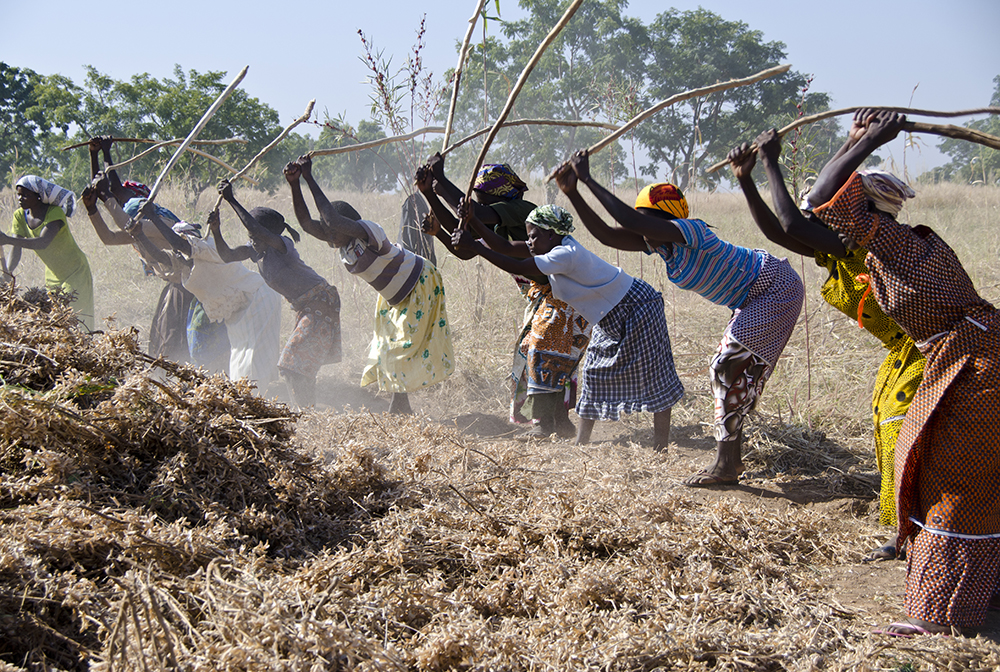The Cost of Missed Opportunity is Borne on Women’s Shoulders
The Leveraging Economic Opportunities project (LEO) recently completed market systems assessments in Cambodia, Guinea, Sierra Leone, the Democratic Republic of the Congo (DRC), and Timor-Leste. This blog is the first in a series that draws lessons from these assessments.
The word epiphany is often used to describe moments of enlightenment or recognition—when you realize you’ve been totally unaware of something that now seems blindingly obvious. Epiphany is the perfect word to describe a two-part realization that came to me after participating in a recent series of value chain assessments. The first part of my realization is that there is an enormous and real cost to opportunities missed. The second part of my realization is that this cost is primarily borne on the shoulders and backs of women and girls.
Women are disproportionately affected by underdevelopment
Underdevelopment is productivity lost from the use of a sub-optimal package of inputs, labor and processing equipment such as mechanical harvesters, threshers, shelling machines, parboilers or oil presses. Low productivity means that households have little or no surplus to sell. With minimal surplus to sell, there is no income with which to procure labor-saving technologies and services; often there is little income with which to meet household needs. Low productivity households depend on labor-intensive manual technologies and these are principally used by women. Globally, women are the major source of unskilled farm labor, which means that the drudgery and labor burden disproportionately falls on their shoulders.

Photo Credit: Alda Kauffeld, USAID/Ghana
Women bear the cost and burden of lost opportunities
The cost of an opportunity lost is the difference between what someone could earn in a more profitable activity less what they are currently earning or contributing. Such an equation does not take into account women’s time and energy, however, since women’s labor is often valued at zero.
When most of a woman’s time is spent on inefficient labor-intensive activities, she will have less time to engage in more profitable activities
More profitable production activities may include small livestock production, market gardens, or alternative cash crop production. More profitable and efficient processing activities could include processing palm oil and shea butter, or soap making. Additionally, a woman will also have less time for breastfeeding and childcare if she is consumed with time- and labor-intensive activities. In low productivity systems, the drudgery and labor requirements of meeting minimal household food and nutritional requirements are enormous and the opportunities to pursue more lucrative activities are lost. As productivity increases, timely processing of surpluses requires more productive technologies, which frees women’s labor for other activities.
In Guinea and Sierra Leone, women thresh grain on the open ground with sticks, mill it by hand in wooden mortars and pestles, and then winnow it by hand. If they produce rice, they parboil it on open fires in small, inefficient cooking pots. Cooking oil is principally expelled from boiled palm fruit squeezed from bare hands. All of these tasks are backbreaking, boring and laborious.
The gender gap impacts not only women, but also their families, communities, and, when aggregated, the countries in which they live
The cost of opportunities lost means less income is available to support the entire household for necessities like healthcare, improved nutrition, access to education, and other basic needs. Research has shown that infant and young child nutrition is linked to women’s access to and control over productive resources. A child’s early access to adequate nutrition affects their lifelong development—brains that are not well fed early on will never be able to compete effectively with those that are better fed and cared for.
In Cambodia, increased paddy yields and urban demand for labor drove the transition from animal traction and manual threshing to the use of tractors and mechanical harvesters and threshers. In Mali, increased rice yields freed women from manual harvesting and threshing, though the low productivity associated with millet and sorghum meant that manual labor was used for all harvesting, threshing and milling of these crops.
How can we reduce the cost of lost opportunities?
A policy environment that ensures the availability of productive and adapted seed and inputs will drive an increase in yields, and increased yields will generate demand for labor-saving technologies (assuming there is an environment that rewards the dealers and service providers of appropriate technologies). Household and community demand for harvesters, threshers, mechanical mills and oil presses to process larger harvests puts pressure on social norms and gender roles. While we have learned that not all upgrading in agricultural market systems benefits women, the failure to take advantage of potential opportunities locks women into the very bottom of the labor ladder, to the detriment of the whole society.
For more on LEO’s work in the area of women’s economic empowerment, check out the framework presented in Women’s Economic Empowerment: Pushing the Frontiers of Inclusive Market Development and the Intervention Guide For The Women's Empowerment in Agriculture Index (WEAI): Practitioners' Guide To Selecting and Designing WEAI Interventions.


